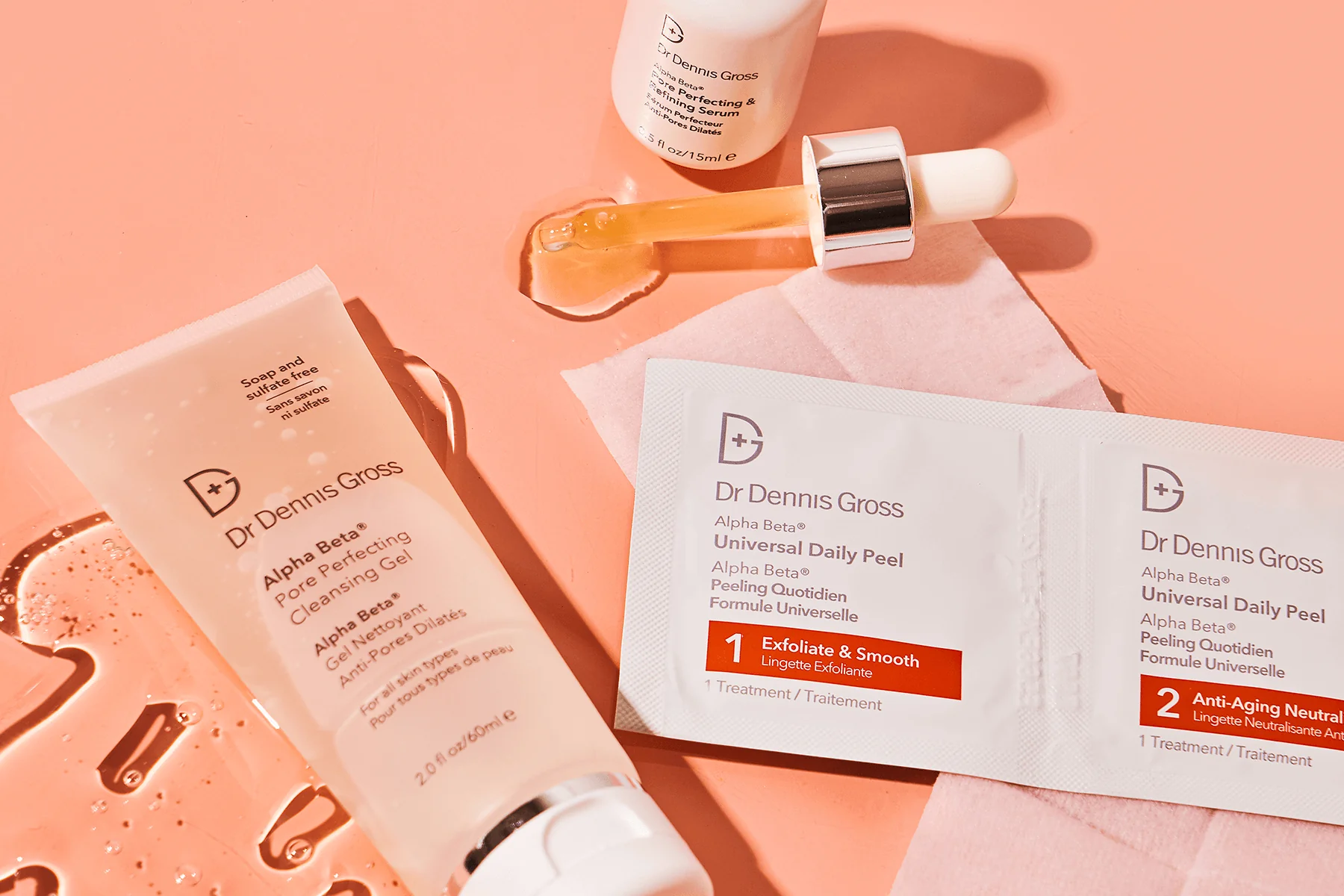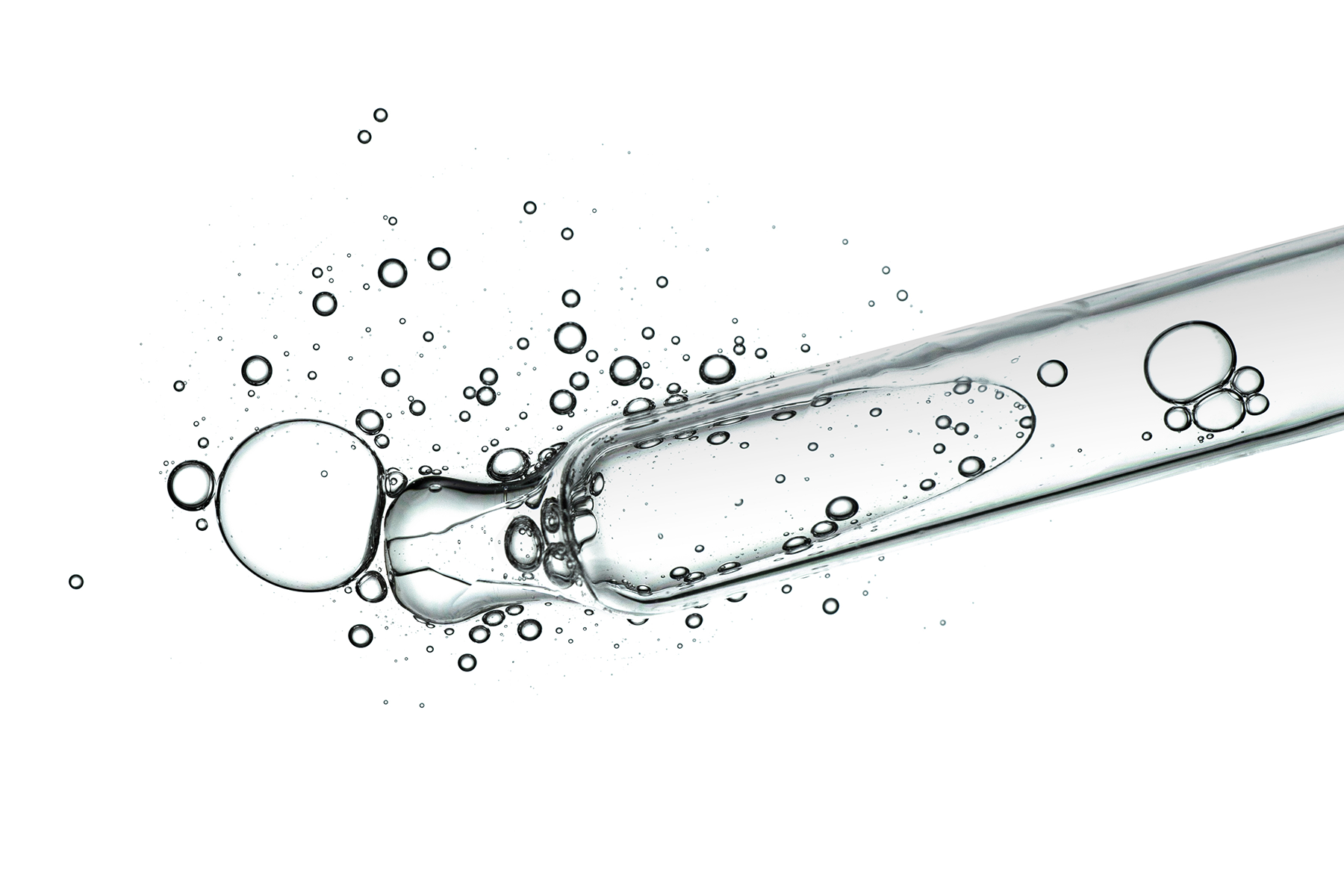The+Source
We are all familiar with the term “red carpet glow” – however you don’t need to be a celebrity to achieve the coveted radiance donned by the likes of Selena Gomez, Hallie Berry and Zendaya during award season. Their number one secret for radiant skin? Routine exfoliation.
Derms agree that exfoliation is key to obtaining a smooth, bright and clear complexion. No matter your skin type or concern, everyone can benefit from saying goodbye to dull skin cells.
Benefits of Exfoliating
Every 24 hours, we accumulate a layer of dead skin cells and debris on our skin’s surface. Regular exfoliation sloughs off the top layer of dead, dull skin along with dirt and bacteria to reveal the new, fresh skin cells underneath. Pores, or those pesky small openings in the skin barrier, become clogged when there is a build-up of dead skin cells. This ultimately leads to dreaded breakouts, uneven texture and enlarged pores. Exfoliation helps prevent these adverse skin conditions plus stimulates cellular turnover, fading hyperpigmentation and reducing the appearance of fine lines and wrinkles. It also clears the way for topical treatments to better penetrate skin and work more efficiently. Think about it – your products are delivered directly to skin vs getting slowed down and impeded by dead skin build up. This means more of the product is getting deeper into skin for better results.
Don’t stop at the face - exfoliation is great for the body too!
Don’t neglect your neck (and below)! Exfoliation has great benefits for the body too, including a boost in radiance, even tone, and clear skin (bye, bye body breakouts!). The biggest difference between exfoliating the face and body is that our body skin is two to four times thicker than the skin on our face. This is why, to properly exfoliate the body, you need a stronger, more potent exfoliant than what you use for your face. Look for a product that is specifically formulated for the body skin.
Body exfoliation is a great treatment for Keratosis Pilaris (aka KP) a skin condition that occurs when the body produces too much of the keratin protein which blocks hair follicles and results in small, white bumps. These bumps tend to appear on the back of the arms as well as the thighs. Despite being a non-serious skin disorder, KP can make people feel self-conscious. Exfoliation helps minimize the bumps for smoother-looking and feeling skin.
Types of Exfoliation
There are two methods or types of exfoliation: chemical and physical.
Chemical Exfoliation
Chemical exfoliation can actually be divided two into two main types: acids & enzymes.
Let’s talk acids first: Alpha Hydroxy Acids (AHAs) work by dissolving the desmosomes or “glue” that hold skin cells together, sloughing off dead skin cells to reveal more youthful, glowing skin and initiate cell turnover and even increase collagen production (this is how we get the glow). Beta Hydroxy Acids (BHA) penetrate the pores to clear lipid-based (aka oil) debris while promoting cell turn over. BHAs are superstars at clearing out oil build up and preventing breakouts.
On the other hand, exfoliating enzymes digest only dead skin cells on the surface. Because they work on the surface level, they are great for people that have sensitive skin. Enzymes can also help reduce redness, however, are primarily utilized for gentle chemical exfoliation.
Both types of chemical exfoliation give you an even resurfacing treatment and are generally considered the most effective way to achieve a smooth texture and radiant complexion.
Physical Exfoliation
Physical exfoliation is done via some sort of abrasion of particles or fabrics against the skin. While physical exfoliation removes dead skin cells, it does not always give you an even, uniform exfoliation.
For example, think of using sandpaper on a piece of wood. It may look smooth to the naked eye, but if you look under a microscope, you will likely see tiny grooves and inconsistencies throughout the wood’s surface.
If you are someone with sensitive skin, physical exfoliation may cause irritation. If your skin appears red, inflamed and blotchy after using a physical exfoliant, try switching to a chemical exfoliator.
Avoid Overdoing It
It is far easier to overdo exfoliation than you might think. Too much exfoliation can cause inflammation and irritation, weaken your skin barrier and throw your skin off balance (all big no no’s). If you feel your skin suffering from redness, increased sensitivity, flaking, peeling, or dryness, that may be an indication that you are overdoing it. Remember, more is not always better, especially when it comes to exfoliation. Even if you have acne, over-exfoliating can be detrimental to skin. If you strip the skin by over exfoliating, it can cause the oil glands to go into overdrive mode and produce even more oil than usual. This excess oil production is likely to clog pores and cause more breakouts in the long run.
To repair your skin after overdoing exfoliation, stop using your exfoliation product immediately. Replace it with a new product that contains a cocktail of acids at lower concentrations. Avoid physical scrubs as they can be especially harsh and cause microtears in the skin barrier. Conduct a patch test with your new exfoliant to ensure that your skin does not have an adverse reaction. Skin only needs to be exfoliated two to three times per week. Alternate exfoliation with hydrating and calming ingredients like hyaluronic acid to soothe the skin and keep it healthy.







